Gleaming in the air, the iridescent blue morpho protects itself from predators using the power of light.
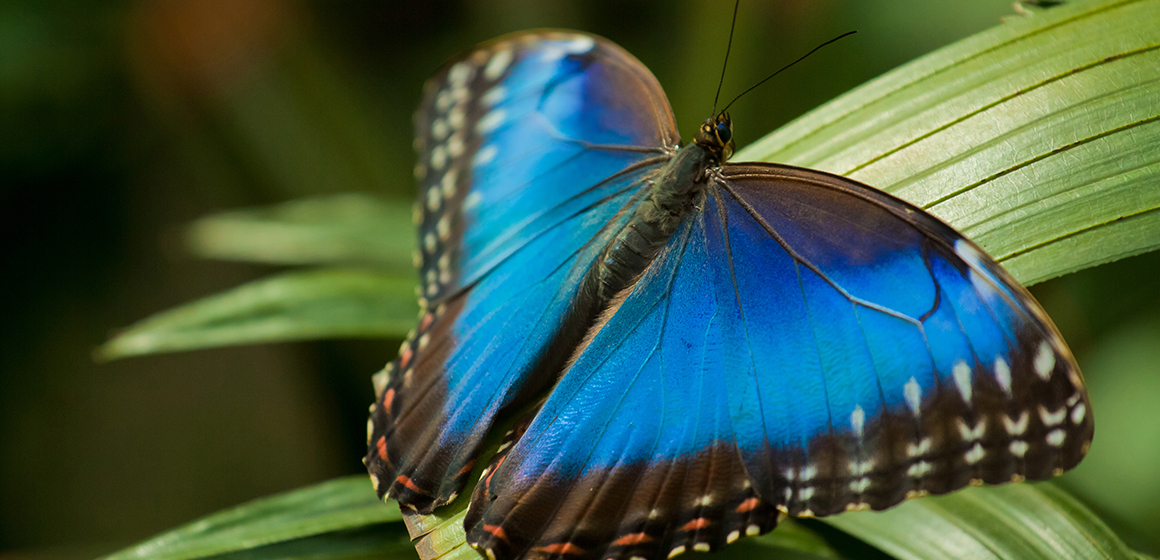
The wings of the blue morpho are formed of up to a million tiny, overlapping scales © trancedrumer/Shutterstock.com
Native to the rainforests of Mexico, Central America and South America, this bright blue butterfly has a short but stunning life.
It is thought that the colour helps the males to mark their territories, and acts as a defence against predators.
The blue morpho is often one of the species featured in Sensational Butterflies, an exhibition of live insects in the Museum’s tropical butterfly house.
Butterfly expert Luke Brown says the species is one of the most striking in the exhibition.
He explains, 'The dazzling blue morpho is undoubtedly a favourite butterfly with visitors because of its incredible colour, its size and its constant activity. You’ll nearly always see them on the wing - which is quite a sight.'
Structural colour
Several different species of butterfly are referred to as 'blue morphos'. The butterflies that often feature in the exhibition are Morpho peleides.
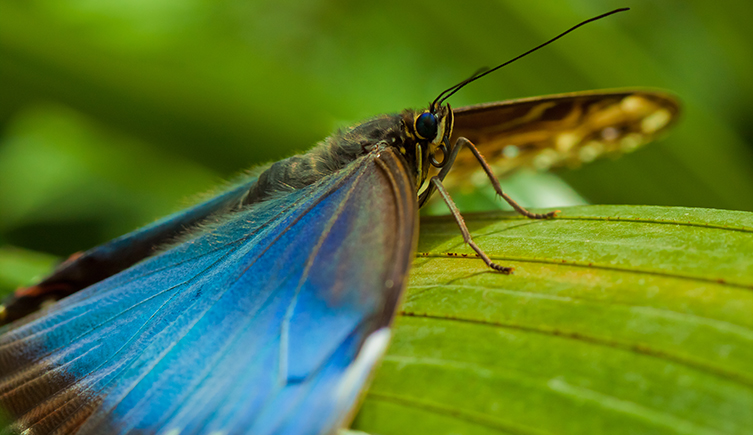
Blue morphos enjoy feasting on mango, kiwi and lychee © trancedrumer/Shutterstock.com
Their wings are formed of up to a million tiny overlapping scales, arranged in a diamond pattern.
These scales are made up of several thin layers that reflect light waves again and again, reinforcing each other to create an intense colour.
Colour created like this, by the physical interactions of light with tiny structures, is known as structural colour.
This is different to colour created by pigments - materials that absorb some wavelengths of light and reflect others.
Only male blue morphos display the characteristic shimmering blue wings over the entire surface. The females are brown with smaller areas of blue interspersed.
Luke says, 'The blue morpho makes my work a little easier. Its emergence success rate (when a butterfly safely breaks out of its chrysalis and survives) is nearly 100% and it flies in virtually all weather conditions, so even on a dull rainy day this showy butterfly will be dancing about mingling with visitors.'
Dark beginnings
The blue morpho's beauty belies a darker aspect of its life cycle - the larvae have a tendency to eat each other.
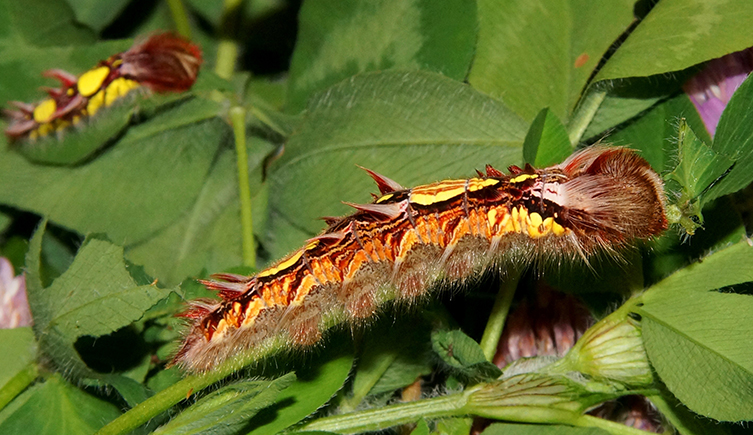
Caterpillars of the Morpho peleides species are cannibalistic, possibly to help control populations
It is not clear why the larvae do this, but scientists have suggested that it might be a way to control populations naturally when resources are limited, or because they have few natural predators.
Luke explains, 'We had blue morphos breeding in the butterfly house one year. We were very excited about all of the tiny tufted caterpillars that appeared, but sadly we only ended up with one very large caterpillar - it had eaten all the others.'
This cannibalistic behaviour does not continue into adulthood - once emerged, the butterflies feed together on fallen fruits.
In the Museum butterfly house, mango, kiwi, lychee and banana are provided for the butterflies. In the wild, they also enjoy feasting on tree sap and rotting animal flesh.
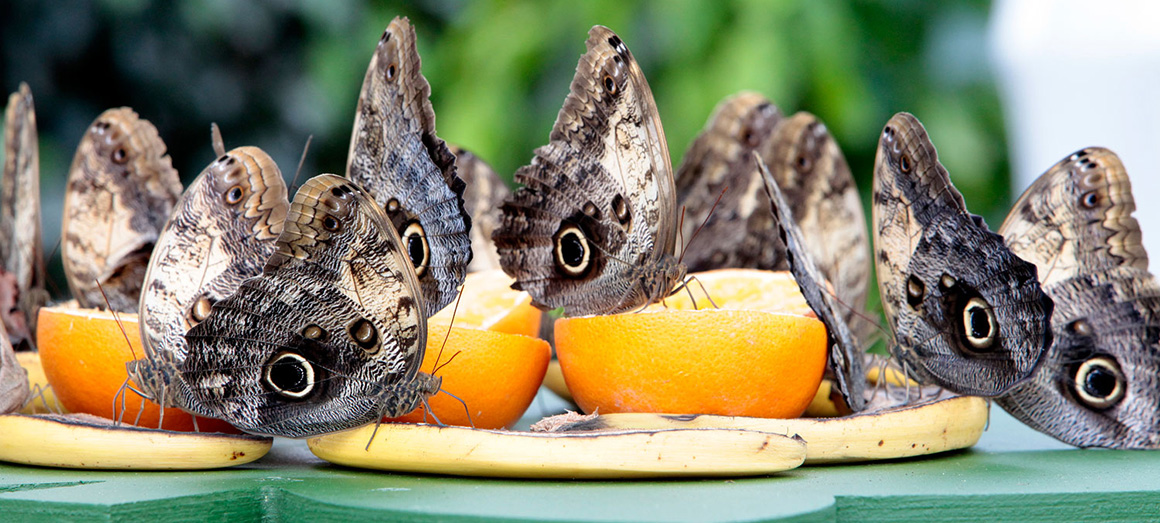
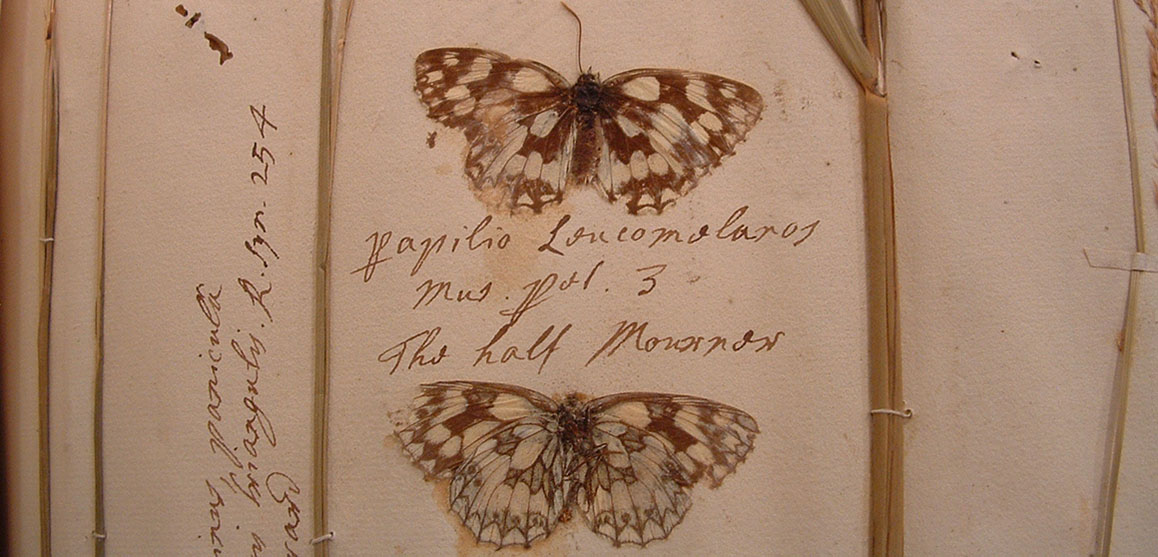
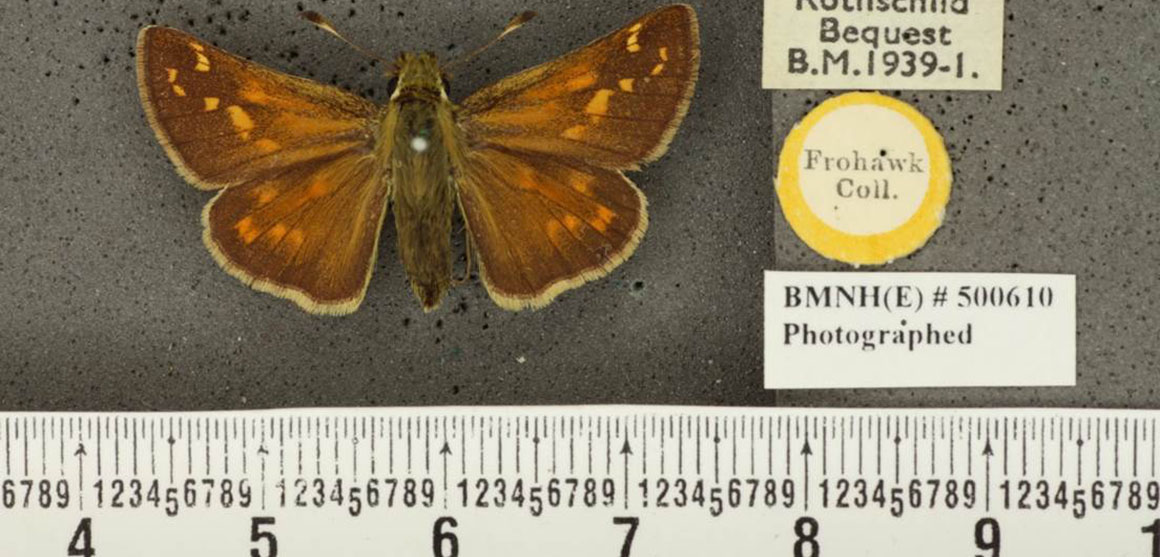

Don't miss a thing
Receive email updates about our news, science, exhibitions, events, products, services and fundraising activities. We may occasionally include third-party content from our corporate partners and other museums. We will not share your personal details with these third parties. You must be over the age of 13. Privacy notice.
Follow us on social media